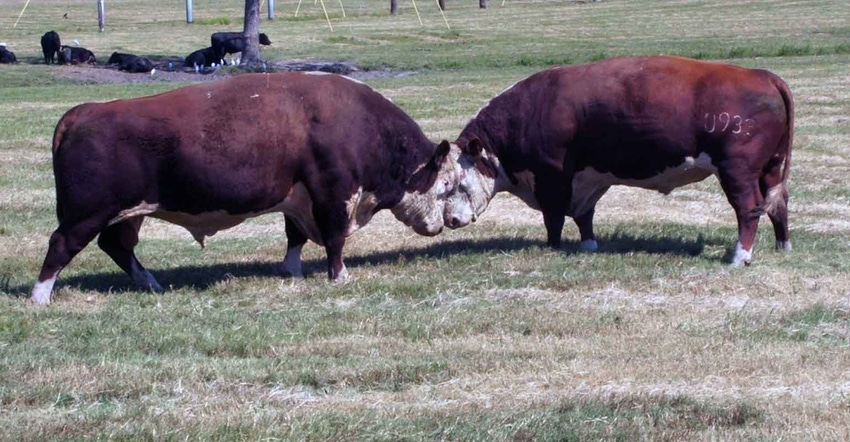May 20, 2022

Did you know that the cow you see grazing in a pasture is a true environmentalist? In fact, beef cattle play an important role in many environmental aspects. While all you may see is a cow eating grass, that animal is actually participating in an important part of the carbon cycle.
Role in carbon
Kim Mullenix, an Alabama Cooperative Extension System beef systems specialist, said beef cattle are the ultimate upcyclers.
“Beef cattle can take the carbon stored within pasture forages and convert that into high-quality protein,” Mullenix said. “They also return those nutrients back to the pasture system, which improves soil health.”
The carbon that beef cattle consume is found within the cellulose of grass and plants. This cellulose is what cattle upcycle to use for things like overall growth and milk production.
Misconceptions about methane
Consuming cellulose produces methane, which the cattle then expel into the atmosphere. However, there are a few common misconceptions about this part of the process.
“Yes, cattle emit methane but not in the way we are most often led to believe,” Mullenix said. “When the forage is digested in the rumen, methane is produced and expelled by the animal, mainly through belching and not through the other end.”
You read that right. Cattle burps are a real thing, and they are just a part of the natural process. The methane cattle expel will eventually break back down into carbon dioxide (CO2). Plants use this CO2 , and the cycle starts over again.
“At the end of the day, cattle are not adding new carbon to the atmosphere but rather utilizing and repurposing what is there for their own growth and benefit to consumers like you and me,” Mullenix said.
World with less cattle
In some contexts, cattle are like the vacuums of the world. In the production process of many other industries, they secondarily produce by-products that humans cannot use. Some examples include feed by-products produced from agricultural row crop production, such as cotton, soybeans, corn and peanuts. However, cattle can consume these by-products, acting as the Earth’s four-legged vacuum.
In a world with less cattle, Mullenix said these industries would have to find alternatives to displace these by-products.
“Without beef cattle, many feed by-products would have no value for other commodities,” Mullenix said. “These by-products would have to simply be land applied or composted, creating another source of greenhouse gas emissions.”
Also, reducing the number of beef cattle nationwide would have negative impacts on industries that support the agricultural industry. This in turn would have environmental implications associated with not using those resources.
Alabama Extension is getting Down to Earth. Why? Because agriculture sustains Alabama. Whether your ag experience is in the grocery store, in the classroom or as your profession—Extension has a resource for you.
We are proud to be partnering with the Alabama Agribusiness Council, the Alabama Cattlemen’s Association, the Alabama Department of Agriculture and Industries, the Alabama Farmers Federation, the Alabama Poultry and Egg Association, the Alabama Forestry Commission, Sweet Grown Alabama and the Alabama Association of RC&D Councils.
Source: Alabama Cooperative Extension System, which is solely responsible for the information provided and is wholly owned by the source. Informa Business Media and all its subsidiaries are not responsible for any of the content contained in this information asset.
You May Also Like




